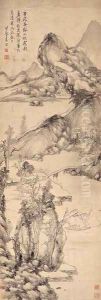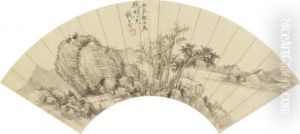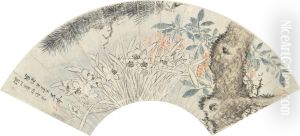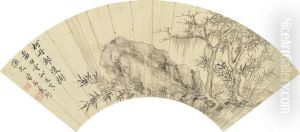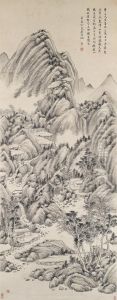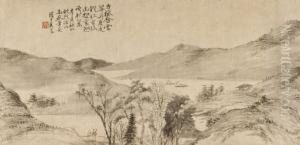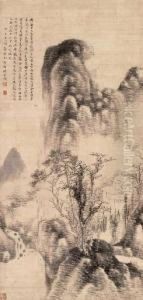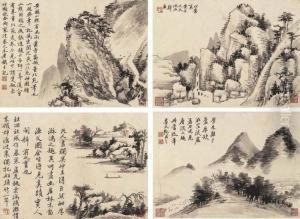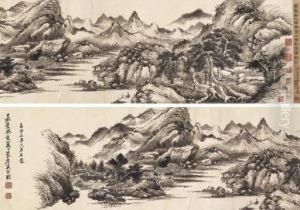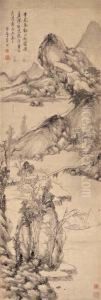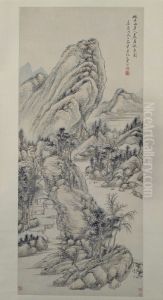Xi Gang Paintings
Xi Gang was a Chinese painter who lived during the Qing Dynasty, specifically in the 18th century. Born in 1746 in Jiaxing, Zhejiang province, his given name was Xi Jianghuai, and he was also known by the courtesy name Weixin. He came from a family with a rich cultural heritage, which provided him a conducive environment for his artistic development.
Xi Gang was especially known for his landscape paintings, which showcased his mastery of the traditional Chinese shan shui (mountain-water) painting style. He was part of the Eight Eccentrics of Yangzhou, a group of artists who were renowned for their unconventional painting styles and rejection of the rigid academic standards of the time in favor of more personal and expressive approaches to art.
Throughout his career, Xi Gang incorporated a sense of individuality and innovation into his works. He often integrated calligraphic brushwork into his landscapes, reflecting his profound skills in both painting and calligraphy. His work was characterized by delicate lines, an elegant use of ink, and a focus on capturing the spirit of nature rather than providing a direct representation.
Despite his association with the Eight Eccentrics, Xi Gang's style was noted for its relative restraint and adherence to traditional aesthetic principles compared to some of his contemporaries. His landscapes often conveyed a sense of tranquility and harmony, which were highly appreciated by art connoisseurs of the time.
Xi Gang's legacy continued after his death in 1803, as his style influenced subsequent generations of Chinese artists. His artworks are still studied and revered today for their contribution to the evolution of Chinese landscape painting, and they hold a significant place in the history of Chinese art. Xi Gang's paintings can be found in various art collections, both in China and internationally, showcasing the enduring appeal of his artistic vision.
